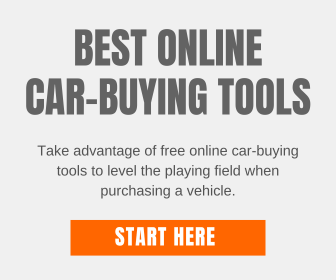The Ultimate Guide to Buying a Car for Rideshare Services like Uber and Lyft
Drive your way to success with the perfect rideshare vehicle—find out how in our ultimate guide.
Understanding Your First Car Buying Experience
In the bustling world of rideshare driving, choosing the right vehicle is more than a practical necessity—it’s a strategic business decision. This guide is designed to help new and seasoned rideshare drivers navigate the complexities of selecting a car that meets Uber and Lyft’s standards while also suiting personal and professional needs. Our goal is to provide you with insights that turn your vehicle choice into a driving force for financial success.
Key Takeaways
- Choose Wisely: Select a fuel-efficient, comfortable, low-maintenance vehicle that meets rideshare standards.
- Find the Best Deal: Use free car price quotes to compare and secure the best price for your ridesharing vehicle.
- Balance Cost and Quality: Aim for a vehicle that offers both affordability and long-term ridesharing success.
The right car can significantly impact your earnings and passenger satisfaction, balancing fuel efficiency, maintenance costs, and comfort. We’ll guide you through considering total ownership costs, financing options, and insurance, helping you balance quality and affordability.
With this guide, you can make an informed decision that will boost your rideshare career and position you for success in a competitive landscape.
Car Buying Tip: Shopping for your first Uber or Lyft ridesharing vehicle can be challenging, with prices often exceeding the suggested retail value. However, securing a fair deal is still possible. Request free dealer car price quotes to compare local dealer prices tailored to your ridesharing needs effectively.
Table of Contents
- Understanding rideshare requirements
- Evaluating your needs and preferences
- Financial considerations
- Where to buy your rideshare vehicle
- How to maximize earnings
- Stand out with additional services
- Maintaining your rideshare vehicle
- Legal and regulatory considerations
- Frequently asked questions
- Final thoughts
Evaluating Your Needs and Preferences
Choosing the right vehicle for your ridesharing business goes beyond just meeting platform requirements—it’s about aligning your car with your specific needs and the preferences of your potential passengers. Let’s look at key factors, such as vehicle type and size, fuel efficiency, maintenance costs, and the importance of comfort and features.
These considerations are essential for optimizing rideshare operations, ensuring passenger satisfaction, and maximizing earnings. Whether you aim to provide standard or premium rides, the following insights will guide you in making an informed decision that caters to your goals and passengers’ expectations.
Assessing Vehicle Type and Size for Ridesharing
Regarding ridesharing, the type and size of the vehicle you choose are pivotal factors that can significantly influence your success.
These elements affect the comfort and satisfaction of your passengers and play a crucial role in determining your vehicle’s operational efficiency.
Assessing Vehicle Type
The ridesharing market is diverse, offering various service categories catering to passenger needs and preferences. These categories range from standard services requiring basic, reliable transportation to premium services, which demand luxury and higher comfort levels.
Here’s how to align your vehicle choice with the service type:
- Standard Rides: For standard services, a mid-size sedan often suffices. These vehicles are sought after for their balance between cost-effectiveness and comfort. They should have enough space to comfortably accommodate up to four passengers, making them ideal for everyday rides.
- Premium Services: To offer premium rides, consider luxury sedans, SUVs, or higher-end models emphasizing comfort, style, and a superior driving experience. These vehicles attract higher fares and can increase your earnings, but they also come with higher upfront costs and maintenance expenses.
Choosing the Right Size of Vehicle
The size of your vehicle directly impacts passenger comfort and the overall ride experience.
However, it’s also important to consider how the size affects fuel efficiency, as this will influence your operating costs and profitability.
- Compact Vehicles: Smaller cars are more fuel-efficient and more accessible to navigate in busy city streets. They’re suitable for solo travelers or pairs, making them a practical choice for standard ridesharing services. However, they may not be the best option for passengers with large luggage or groups looking for more spacious accommodations.
- Mid-size to Full-size Vehicles offer more legroom and space, enhancing passenger comfort for longer trips or groups of three to four people. While they may have slightly lower fuel efficiency than compact cars, their versatility in accommodating a broader range of ride requests can lead to higher earnings.
- SUVs and Minivans: SUVs and minivans are ideal for drivers interested in providing services to larger groups or families. They offer ample space for passengers and luggage, making them perfect for airport runs or group outings. Depending on their make and model, these vehicles can qualify for standard and premium categories, but their fuel consumption and maintenance costs are typically higher.
Balancing passenger comfort with fuel efficiency is critical in selecting the right ride-sharing vehicle.
By thoughtfully assessing the types of rides you plan to offer and choosing a vehicle size that aligns with these services, you can ensure a positive experience for your passengers while optimizing your operational efficiency and profitability.
- How to Buy a New Car Below Factory Invoice Price – True dealer cost and the factory invoice price are not the same… dealer cost can be much lower.
- Figure a Fair Profit New Car Offer – How to calculate a fair profit new car offer.
- How to Buy a New Car Online – Not sure where to start? Use my step-by-step guide on how to buy a new car online.
Fuel Efficiency and Maintenance Costs
Selecting a vehicle with high fuel efficiency and low maintenance costs is crucial for increasing rideshare earnings. Here’s how to optimize these factors:
Fuel Efficiency
- Economic Benefit: More miles per gallon means lower fuel expenses, boosting profit margins.
- Fuel Type: If the recommended fuel type is a higher octane. Your expenses will be more to operate your rideshare vehicle.
- Eco-Friendly Choice: Fuel-efficient cars, especially hybrids and electrics, can reduce environmental impact and attract eco-conscious passengers.
Maintenance Costs
- Choose Reliability: Opt for models known for durability to avoid frequent and costly repairs.
- Keep Up with Maintenance: Regular check-ups can prevent significant issues, extending your car’s lifespan and ensuring safety.
- Consider Warranties: Vehicles with good warranty coverage can save you from unexpected repair expenses.
Tips for Choosing
- Do Your Homework: Research and compare vehicles based on fuel economy and reliability ratings.
- Think Long-Term: Evaluate the total cost of ownership, including depreciation, to make an informed decision.
- Learn from Peers: Connect with experienced rideshare drivers for firsthand vehicle performance and cost insights.
Comfort and Features
Investing in a vehicle that prioritizes comfort and modern features is not just about providing a pleasant ride; it’s a strategic decision that can significantly impact passenger satisfaction, ratings, and success in the rideshare industry. Here’s how focusing on comfort and features can make a difference and what to look for when selecting your vehicle:
Comfort
- Seating: Look for vehicles with spacious, ergonomically designed seats that offer adequate support and adjustability. Quality seating can greatly enhance passenger comfort, especially during longer rides.
- Climate Control: An effective climate control system ensures that your passengers can easily adjust the temperature to their liking, making their journey more enjoyable regardless of the weather outside.
- Noise Insulation: A quiet cabin is crucial for passenger comfort. Vehicles with good noise insulation allow passengers to relax or work without the distraction of road or engine noise.
Modern Features
- USB Ports and Charging Options: In today’s connected world, passengers often appreciate the ability to charge their devices during their ride. Having multiple USB ports accessible to passengers can be a significant convenience.
- Wi-Fi Connectivity: Offering Wi-Fi in your vehicle can be a significant selling point, especially for business travelers or those needing to stay connected.
- Entertainment Systems: Features like in-car entertainment systems allowing passengers to listen to music or watch videos can enhance the ride experience, making longer trips shorter.
The Impact on Your Rideshare Business
- Increased Ratings and Tips: A comfortable and feature-rich ride can increase passenger ratings, increase your visibility on rideshare platforms, and increase ride requests. Additionally, passengers are often more inclined to tip when these comforts enhance their experience.
- Competitive Edge: In a crowded rideshare market, offering a superior passenger experience can set you apart from other drivers. This is especially true if you’re targeting premium ride categories with higher expectations for comfort and features.
- Passenger Loyalty: Satisfied passengers are more likely to become repeat customers. By providing a memorable experience, you can build a loyal customer base that prefers your service over others.
Making the Right Investment
When selecting a vehicle for your rideshare business, consider the long-term benefits of investing in comfort and modern features. Vehicles classified as family cars are an excellent choice for your Uber or Lyft ridesharing business. While such cars might have a higher upfront cost, the potential for increased earnings through higher ratings, tips, and passenger loyalty can outweigh the initial investment.
Remember, your vehicle is more than just a car; it’s the cornerstone of the passenger experience you offer.
Real-Time Bargain Hunting: Turn to Edmunds for instant access to the latest and greatest local deals, saving you time, money, and stress.
Financial Considerations
Navigating the financial landscape of purchasing and operating a rideshare vehicle is crucial for maintaining a profitable business.
After selecting a vehicle for your ridesharing business, let’s examine key financial considerations, including how to budget effectively for your vehicle purchase, explore financing options to suit your needs, and understand the nuances of insurance and tax obligations.
These insights will equip you with the knowledge to make informed decisions, ensuring your rideshare venture stands on solid financial ground.
Budgeting for Your Purchase
Setting a realistic budget for your rideshare vehicle purchase is essential, encompassing both the initial cost and ongoing expenses:
Initial Costs
- Purchase Price: Decide your spending limit for the vehicle, factoring in new, used, or certified options.
- Down Payment & Fees: Account for the down payment, taxes, and dealership fees.
Ongoing Expenses
- Fuel: Estimate fuel costs based on expected mileage and the car’s fuel efficiency.
- Maintenance: Budget for regular upkeep and potential repairs to maintain vehicle condition.
- Insurance: Consider the higher premiums for rideshare-specific insurance policies.
- Depreciation: Remember that your vehicle will lose value, especially with high rideshare usage.
Budgeting Strategy
- Total Investment: Sum up initial and operational costs for a comprehensive budget.
- Earnings Outlook: Align expenses with your anticipated rideshare earnings.
- Emergency Fund: Reserve funds for unexpected costs to safeguard your financial stability.
Finance Options for Your Rideshare Purchase
Finding suitable financing options is a pivotal step in acquiring a ridesharing vehicle.
Each option has advantages and considerations, making it crucial to choose one that best fits your financial circumstances and long-term objectives.
Here’s an in-depth look at the primary automotive financing avenues:
Auto Loans
- Traditional Bank Loans: Banks offer auto loans with competitive interest rates. Your credit score significantly influences the rate you receive.
- Credit Unions: Credit unions often provide lower rates than banks, so credit unions require membership but can be a cost-effective financing source.
- Online Lenders: For convenience, online services such as myAutoLoan offer quick loan approvals. Compare rates and terms carefully, as they can vary widely.
Leasing
- Lower Monthly Payments: Leasing a vehicle typically results in lower monthly payments than buying, making it an attractive option for drivers seeking to minimize upfront costs.
- New Models: Leasing allows you to drive newer models, which can be appealing for providing a premium passenger experience.
- Mileage Limits: Be mindful of mileage restrictions. Ridesharing involves considerable driving, and exceeding lease mileage limits can result in hefty penalties.
- Wear and Tear: Leases also come with conditions regarding the vehicle’s condition upon return. Excessive wear and tear could incur additional charges.
Rent-to-Own Programs
- Flexibility: Some dealerships or rideshare platforms offer rent-to-own programs, allowing drivers to rent a vehicle with the option to buy it eventually. This can be a flexible pathway to ownership without the initial commitment.
- No Credit Checks: These programs often don’t require a credit check, making them accessible to drivers with less-than-perfect credit histories.
Manufacturer Financing
- Special Deals: Car manufacturers sometimes offer financing deals, especially for new cars, including low-interest rates or cash-back offers.
- Direct Financing: Applying directly through the manufacturer can streamline the process, potentially offering better terms for qualified buyers.
Key Considerations
- Total Cost: In addition to the monthly payment, consider the cost of financing or leasing, including interest rates, fees, and any penalties.
- Pre-approved: Get a pre-approved auto loan in place before visiting a dealership. You can use your pre-approval as leverage against the dealership finance department.
- Financial Goals: Align your choice with your financial stability and long-term plans. For instance, buying might be preferable if you aim for long-term rideshare driving, whereas leasing could suit those testing the waters.
Before committing to any financing option, conducting thorough research and possibly consulting with a financial advisor is essential.
Understanding the nuances of each option will empower you to make an informed decision that supports your rideshare business’s growth and sustainability.
Insurance and Taxes
Understanding the insurance requirements and tax implications of your rideshare earnings is crucial for protecting your assets and ensuring compliance with regulations.
Insurance Requirements
- Rideshare Insurance: Most standard auto insurance policies don’t cover commercial activities like ridesharing. Therefore, rideshare drivers are typically required to carry additional rideshare insurance to fill this gap.
- Coverage Options: Rideshare insurance typically offers coverage for three periods:
- Period 1: When you’re online and waiting for a ride request.
- Period 2: When you’ve accepted a ride request and are en route to pick up passengers.
- Period 3: When passengers are in your vehicle.
- Policy Considerations: When selecting rideshare insurance, consider coverage limits, deductibles, and whether the policy provides coverage during all three periods of rideshare driving.
Tax Implications
- Self-Employment Taxes: As a rideshare driver, you’re considered self-employed, which means you’re responsible for paying self-employment and income taxes.
- Tax Deductions: Fortunately, being self-employed also comes with certain tax deductions that can help offset your tax liability. Standard deductions for rideshare drivers include mileage, vehicle expenses, insurance premiums, and other business-related expenses.
- Quarterly Estimated Taxes: Since rideshare companies typically don’t withhold taxes from your earnings, you’re responsible for making quarterly estimated tax payments to the IRS to avoid underpayment penalties at the end of the year.
Compliance and Preparation
- Consultation: Consult with a tax professional or accountant specializing in self-employment taxes to ensure you understand your tax obligations and maximize your deductions.
- Record-Keeping: Keep detailed records of your rideshare earnings and expenses throughout the year to simplify tax preparation and ensure accuracy when filing your tax return.
- Continuing Education: Stay informed about changes to tax laws and regulations that may affect rideshare drivers and any updates to insurance requirements from rideshare companies or state regulatory agencies.
Car Dealerships
Dealerships serve as a popular choice for purchasing rideshare vehicles due to several distinct advantages they offer:
Online Car Quotes
- Accessibility: You can request quotes from multiple dealerships using free online services such as RydeShopper and Edmunds without visiting in person.
- 24/7 Availability: Obtain quotes at any time, fitting into busy schedules.
- Price Comparison: Easily compare prices from different dealerships.
- No Pressure Sales: Review quotes at your own pace without face-to-face pressure.
- Empowerment: Use multiple quotes to negotiate better deals.
- Preparation: Research prices online to enter negotiations confidently.
Reliability
- Quality Assurance: Dealerships typically inspect and refurbish their used vehicles before putting them up for sale, ensuring a certain level of reliability.
- Vehicle History Reports: Many dealerships provide vehicle history reports, offering transparency regarding past accidents, service records, and ownership history.
- Reputation: Established dealerships often prioritize customer satisfaction and maintain their reputation by offering high-quality vehicles.
Warranty Options
- Manufacturer Warranties: New vehicles purchased from dealerships often come with manufacturer warranties, providing coverage for a specified period or mileage.
- Extended Warranty Packages: Dealerships may offer extended warranty packages for new and used vehicles, providing additional peace of mind against unexpected repairs.
Wide Selection
- New and Used Inventory: Dealerships typically offer a broad range of new and pre-owned vehicles, allowing buyers to choose from various makes, models, and trim levels.
- Test Drives: Prospective buyers can test drive multiple vehicles to compare performance, features, and overall suitability for rideshare driving.
- Trade-in Options: Dealerships may accept trade-ins, allowing buyers to offset the cost of their new purchase by trading in their current vehicle.
Overall, purchasing from a dealership gives buyers reassurance regarding vehicle reliability, warranty coverage options, and access to a diverse selection of vehicles.
However, it’s essential to research and compare dealerships, negotiate prices, and carefully review all terms and conditions before making a final decision.
Private Sellers
Buying from a private seller can offer lower prices but requires careful inspection and verification:
Advantages
- Cost Savings: Private sellers often offer lower prices due to lower overhead costs.
- Negotiation Flexibility: Buyers have more room for negotiation.
- Less Formality: Transactions are typically less bureaucratic.
Challenges
- Limited Warranty: No warranties or guarantees are provided.
- Limited Selection: Fewer options compared to dealerships.
- Risk of Fraud: Buyers must be cautious of misrepresentation.
Diligence in Inspection
- Vehicle Inspection: Conduct a thorough inspection, preferably with a mechanic.
- History Verification: Request maintenance records and a vehicle history report.
- Test Drive: Evaluate the vehicle’s performance firsthand.
Negotiation and Documentation
- Price Negotiation: Negotiate based on the vehicle’s condition.
- Documentation: Ensure all paperwork is completed accurately.
While purchasing from a private seller may offer cost savings and flexibility, it requires careful inspection, verification, and negotiation to effectively mitigate risks.
Certified Pre-Owned Vehicles
Opting for certified pre-owned (CPO) vehicles presents a compelling option for rideshare drivers seeking a balance between affordability and peace of mind.
Let’s take a quick look at some of the benefits and considerations associated with CPO vehicles:
Advantages
- Quality Assurance: Rigorous inspections ensure high standards.
- Manufacturer Warranty: Backed by warranties for peace of mind.
- Low Mileage: Typically, the mileage is lower for reliability.
Extended Benefits
- Additional Services: Include roadside assistance and maintenance.
- Peace of Mind: Reduced risk of significant issues post-purchase.
Considerations
- Higher Cost: Comes with a premium compared to regular used cars.
- Limited Selection: Choices may be more limited than regular used cars.
CPO vehicles offer reliability and peace of mind, making them a worthwhile consideration for rideshare drivers.
Maximizing Earning with the Right Vehicle
Selecting the right vehicle and incorporating additional services that enhance the passenger experience is crucial to maximizing your earnings in the rideshare industry. Let’s explore how choosing a car with high demand and offering extra amenities can help boost your rideshare earnings.
Selecting a Car with High Demand
When selecting a car for rideshare driving, prioritize passenger comfort and convenience:
Passenger Comfort
- Spacious Interior: Choose a car with ample room for passengers.
- Comfortable Seating: Opt for supportive seats for long rides.
- Climate Control: Ensure effective temperature management.
Features and Amenities
- Entertainment Options: Consider built-in entertainment systems.
- Connectivity: Provide USB ports and Bluetooth connectivity.
- Safety Features: Prioritize vehicles with advanced safety features.
Versatility
- Sedans: Ideal for individual passengers or small groups.
- SUVs: Suitable for larger groups or families.
Market Research
- Popular Models: Analyze rideshare data for high-demand models.
- Passenger Feedback: Solicit feedback to tailor your vehicle selection.
Stand Out with Additional Services
Incorporating additional services into your rideshare vehicle can significantly enhance the passenger experience, leading to higher ratings, increased tips, and improved overall satisfaction. Here’s how you can equip your car with amenities to delight passengers:
Comfort and Convenience
- Water Bottles: Provide complimentary water for hydration.
- Phone Chargers: Offer chargers for various devices.
- Wi-Fi: Enable Wi-Fi access for passenger connectivity.
Entertainment Options
- Music Streaming: Allow passengers to play music.
- Video Entertainment: Offer options for video playback.
Personal Comfort
- Snacks: Stock snacks like granola bars.
- Comfort Accessories: Provide blankets or pillows.
Safety and Convenience
- First Aid Kit: Keep a basic kit for emergencies.
- Navigation Assistance: Help passengers with directions.
Branding and Personalization
- Branded Merchandise: Offer branded items as souvenirs.
- Personal Touches: Add unique decor for a memorable ride.
Maintaining Your Rideshare Vehicle for Long-Term Success
Maintaining your rideshare is essential for long-term success in the industry. Regular upkeep ensures passenger safety and satisfaction and helps prevent costly repairs. Here’s a detailed look at why maintenance is crucial and how you can keep your vehicle in top condition:
Importance of Maintenance
- Safety: Regular checks ensure passenger safety and satisfaction.
- Reliability: Prevents breakdowns, allowing consistent service.
- Cost Savings: Avoids costly repairs and maintains resale value.
Key Tasks
- Oil Changes: Keep the engine healthy with regular oil changes.
- Tire Care: Monitor pressure and rotate tires for even wear.
- Brake Inspections: Ensure brakes are functioning correctly.
- Fluid Checks: Maintain fluid levels to prevent damage.
- Filter Replacements: Change filters to maintain performance and air quality.
Tips for Maintenance
- Follow Schedule: Adhere to the manufacturer’s maintenance schedule.
- Record Keeping: Keep detailed records of all maintenance.
- Prompt Attention: Address issues promptly to prevent further damage.
- Professional Inspections: Schedule regular inspections with a mechanic.
Long-Term Benefits
- Cost Savings: Prevents expensive repairs and extends vehicle life.
- Resale Value: Maintains higher resale value with proper upkeep.
- Enhanced Reputation: Reflects professionalism and commitment to quality service.
Legal and Regulatory Considerations
Understanding and adhering to legal and regulatory requirements is essential for rideshare drivers to operate legally and avoid potential penalties or fines.
Know Local Laws
- Licensing: Research necessary licenses and permits.
- Vehicle Regulations: Understand vehicle requirements.
- Taxi vs. Rideshare: Different regulations may apply.
Obtain Permits and Licenses
- Driver’s License: Ensure it meets rideshare standards.
- Rideshare Permit: Apply for required permits.
- Vehicle Registration: Register for rideshare use if needed.
Maintain Compliance
- Stay Informed: Keep up-to-date with regulations.
- Company Policies: Follow rideshare company guidelines.
- Record-Keeping: Maintain documentation of compliance.
Seek Legal Guidance if Needed
- Consult Professionals: Get advice from legal experts.
- Join Associations: Consider joining driver associations for support.
By understanding, obtaining, and maintaining compliance with legal requirements, rideshare drivers can operate lawfully and responsibly, minimizing the risk of regulatory issues.
FAQs About Buying a Rideshare Vehicle
How can I compare prices when buying a rideshare vehicle?
Use free online car price quotes to compare dealer prices in your local area.
What are the age requirements for a rideshare vehicle?
Generally less than ten years old.
What type of vehicle is preferred for rideshare driving?
4-door sedan, capable of seating four passengers comfortably.
What features should I prioritize when buying a rideshare vehicle?
Comfort, fuel efficiency, and modern amenities like USB ports.
How can I enhance the passenger experience in my rideshare vehicle?
Offer amenities like water bottles, chargers, and Wi-Fi.
What insurance coverage is required for rideshare drivers?
Proper insurance coverage as per state law.
What are the long-term benefits of investing in a rideshare vehicle?
Increased earnings, higher ratings, and passenger loyalty.
Conclusion: Maximizing Rideshare Success Through Smart Vehicle Purchases
In conclusion, purchasing the right vehicle for rideshare services like Uber and Lyft is a crucial step that requires thorough planning and consideration. It involves assessing your needs, budgeting wisely, and understanding the regulatory landscape.
Following the guidelines outlined in this guide, drivers can make informed decisions that enhance the profitability and sustainability of their rideshare careers. Factors such as passenger comfort, fuel efficiency, and maintenance costs must be prioritized when selecting a vehicle. Additionally, drivers should stay informed about legal requirements and obtain necessary permits and licenses to operate legally.
By choosing a vehicle with high demand, incorporating additional services to enhance the passenger experience, and prioritizing regular maintenance, drivers can maximize their earnings potential and build a loyal customer base.
Remember, your vehicle is more than just a car; it’s your business partner on the road to rideshare success. Invest wisely to position yourself for long-term success in the competitive rideshare market.
















